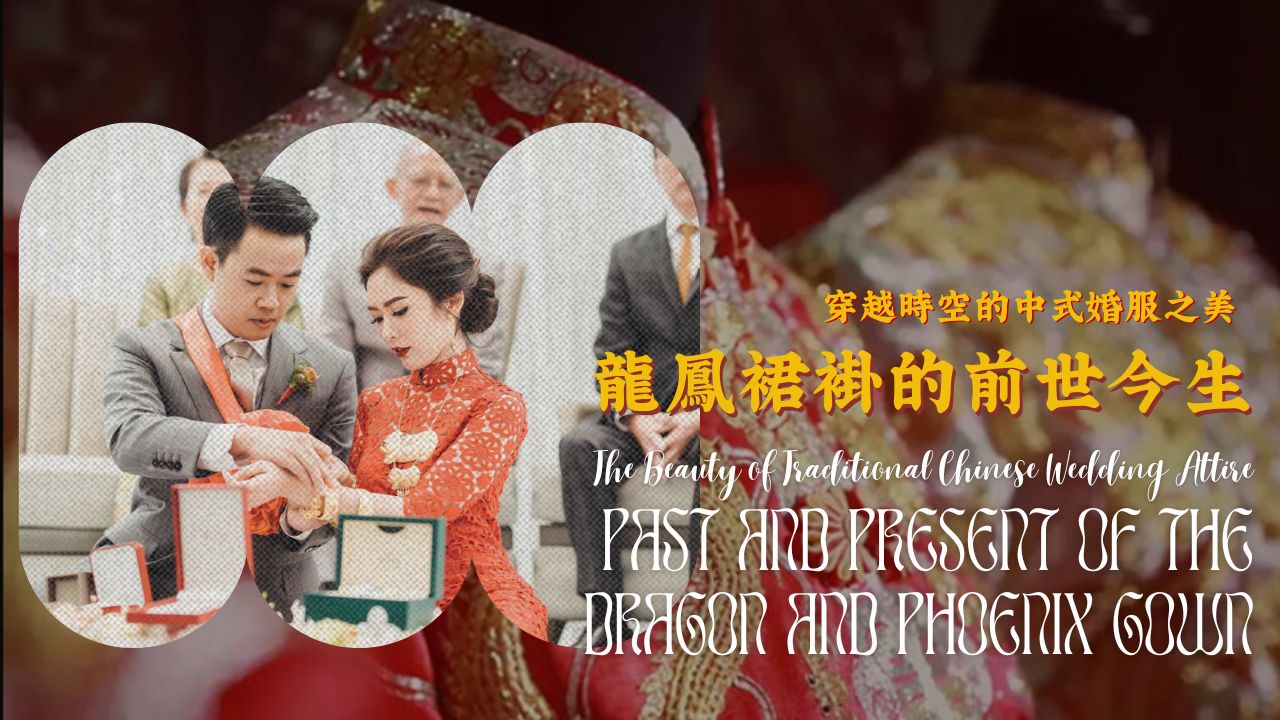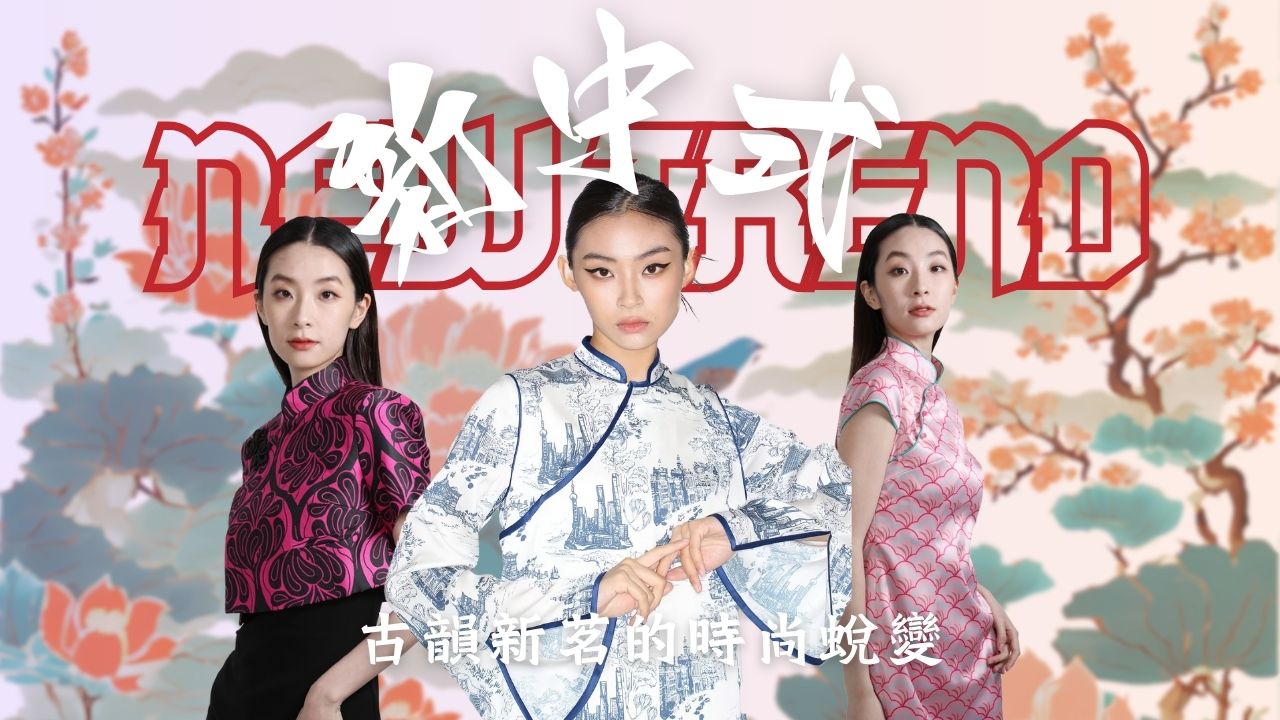
穿越時空的中式婚服之美 - 龍鳳裙褂的前世今生|中國傳統婚禮服飾之美-龍鳳褂的前世今生
絲絲金銀繡線纏成龍鳳,舞動在掛裙上,為造型新人獻上美好祝福。裙褂是屬於中國人的傳統嫁嫁服。一襲裙褂上身,已頓覺奢華。金絲銀線,繡製花開富貴,龍呈祥,在燈光映照照下炫彩奪目,萍萍生輝。你可曾好奇此身華服的由來?抑或,在股市社會向來重重點新人青睞的西方純白這一債務主流下,中裙式褂如何擺脫時代禁錮的枷鎖,在傳續中創新?
用金銀線繡成的龍鳳圖案在垂墜的裙子上翩翩起舞,為新婚夫婦送上祝福。這件婚紗是中國傳統的婚禮禮服,穿上這件奢華的禮服,立刻讓人感受到一種奢華的氣息。金銀線上繡著吉祥的花朵和雄偉的龍鳳,在燈光的襯托下閃閃發光。你是否曾經好奇過這件華服的起源?又或者,在西方全白婚紗盛行的今天,這件傳統的中國婚紗是如何打破時代的桎梏,在傳承的同時不斷創新?
龍鳳裙褂的由來
龍鳳袍的起源
龍鳳褂起源於昔日滿洲人的服飾,乾隆明代立領馬面襖裙,褂指上衣,裙為下裳。相傳是幾百年前有一位名叫梁儲的貴族,曾手抱年幼太子上殿登基,小皇帝後對梁儲十分尊敬,當梁儲女兒出嫁便賜予她「龍鳳裙褂」。 由於梁儲是廣東人,穿裙褂變成了廣東的婚俗,進而傳至上海、北部地區。
「龍鳳褂」源自滿族傳統服飾,源自明代立領馬麵袍裙,「褂」指上衣,「裙」指下衣。相傳幾百年前,有位高官叫梁儲,專門抬年幼的王子入朝登基。成年後的皇帝對梁儲十分器重,梁儲的女兒出嫁時,皇帝賜給她「龍鳳褂」。由於梁儲來自廣東,這件褂子便成為廣東地區的婚嫁習俗,後來又傳到上海及北方地區。
![婚禮文化]香港裙掛/龍鳳褂介紹- 台北/台南婚攝Simon Wang-Wusen Photo 幸福地圖婚禮攝影](https://blogger.googleusercontent.com/img/b/R29vZ2xl/AVvXsEhDgQmZYGvAceSWAW1_oqXJerLLKL9s1ANhGUld8Med0jRSOJccal4bB-7WRIHqFXVRbDoyAGkqXNoI1ZBVoTeSOkLMyA0c2jR-2PxSpTD-nptdFZWm1wpBe4q_NIBk2jhNPjBrTCB5IRU/s1600/140712_1944_41.jpg)
該
時至今日,龍鳳褂文化在廣東地區包括香港仍然盛行。香港新娘出嫁的傳統禮服,裙子興起於上世紀30年代,在六、七十年代進入全盛時期。早期,龍鳳褂為黑褂紅裙,直到清末民初,人們逐漸認為代表紅色喜氣,褂裙顏色才由黑轉為紅,另外,早期的龍鳳褂多未設計腰身,款式以直筒為主,恐慌為滿足人們需求,多束收腰輪廓。為七分袖,因此,新娘多會在手腕和手腕上戴上金色的龍鳳項鍊和項鍊,再踩上鑲有“囍”字樣的鞋子,優雅的跟跟禮堂。中式禮服多為手工製作。以金銀線密度高低分成褂皇、褂後、中小五福等不同品類。接近100%金銀線童年的裙褂被稱為“褂皇”,整件裙褂表面均由金銀線覆蓋。裙褂作為傳統嫁嫁服,所覆蓋的金銀線童年亦承載著對婚姻愛情的美好祝福。
時至今日,「龍鳳褂」文化在廣東乃至香港依然鮮活。作為香港新娘的傳統婚禮服飾,龍鳳褂在1930年代開始盛行,並在六、七十年代達到鼎盛。早期的龍鳳褂由黑色上衣和紅色下擺組成,直至清末民初,紅色逐漸被視為吉祥之色,才逐漸演變為全紅色的禮服。此外,早期的龍鳳褂多為直筒式,收腰收腰,而如今的剪裁則更注重展現新娘的曲線美。龍鳳褂通常採用七分袖設計,新娘需佩戴金色龍鳳手鐲和項鍊,搭配繡有「囍」字的「喜」鞋,優雅地步入婚禮殿堂。
中式婚紗大多為手工製作。根據金銀線刺繡的密度,婚紗分為不同等級,從覆蓋率接近100%的“掛皇”,到“掛後”、“大”、“中”、“小”等不同等級。婚紗上精巧的繡線工藝,象徵新人對婚姻美滿的真誠祝福。


美好寓意背後的精緻
吉祥寓意背後的精湛工藝
精美寓意的背後是師傅的巧手。龍鳳褂的製作是一項非常精細的工藝,從畫至稿完成需要完成三百多道工序,全部由手工製作。為求一套,繡法統一,則必須由同一人完成。因此,完成縫製一套龍鳳褂需時則三個月至一年不等。在講求工藝、流水作業的時代,手工嫁衣背後含蘊的心意更為圓滿。
龍鳳褂的美好寓意源自於工匠們精湛的技藝。龍鳳褂的製作過程極為精湛,從構思到最終完成,需要超過300道手工工序。為了確保對稱性和一致性,整套刺繡必須由一位繡工完成。因此,一套完整的婚紗可能需要3個月到一年的時間才能完成。在這個追求效率和大規模生產的時代,這些手工婚紗背後獨特的人文關懷彌足珍貴。

也許你會疑惑,考慮到透視社會科技之發達,如此複雜復工怎不能互換機器替代? 然而傳統裙褂龍鳳飛舞的感覺講求立體感的表現,就只有人手可以做到這麼立體的效果。
你可能會想,既然如今科技如此發達,為什麼這個過程不直接機械化呢?然而,龍鳳圖案的立體、流暢的動感,唯有技藝精湛的人手才能實現。
不單是製作工序繁複,就連對少年師傅的要求也必然嚴苛要求。首先,少年師傅的手要求一定不能出汗多,否則汗水會讓布匹和金銀線氧化而變色。
除了複雜的製作工藝,對繡花師的要求也異常嚴格。首先,他們的手不能出太多汗,因為汗水會導致布料和金屬線氧化變色。
當傳統與現代融合
當傳統遇見現代
西方受社會文化美學影響,西方純白新娘的引進曾使中式裙褂一度沒落。然而,中式裙褂的璀璨光芒又怎會被忽略式呢?近年來,劉詩詩、陳妍希等不少女星婚嫁時所的中式裙褂傳統中帶著現代化的設計,使人讚歎不已,真的是我們認識中老套這種款式沉悶的中裙掛嗎?
西式白色婚紗的出現,一度掩蓋了中式禮服的光芒。然而,這件傳統禮服的光彩卻絲毫未減。近年來,劉詩詩、陳妍希等許多明星新娘都穿著現代風格的中式禮服,驚豔了觀眾,也挑戰了我們對這種過時沉悶風格的固有印象。


傳統,傳續
透過創新保留傳統
手工精緻、寓意深遠的中式裙褂,值得存留下來。但要能傳承傳統非墨守成規,一成不變。相反,在傳統的基礎上融合現代化的設計與剪裁,在傳承中創新,更能讓更多人了解及樂意接觸到如此美妙的服飾文化。
工藝精湛、象徵意義豐富的中國禮服值得傳承。然而,傳承傳統並不意味著墨守成規。將傳統元素與現代設計和輪廓融合,在傳承中創新,才能更好地欣賞和擁抱這份服飾遺產的魅力。

就像一鳴一直勵志為傳統旗袍長衫加入現代化元素一樣,製作當代接受的時尚單品,成為新一代女士的時尚單品。
正如藝名一直致力於將現代元素融入傳統旗袍和長衫,使其成為新一代的必備時尚單品一樣,中式婚紗也可以經歷類似的演變,在保留其永恆優雅的同時,保持其相關性。










留言
此網站已受到 hCaptcha 保護,且適用 hCaptcha 隱私政策以及服務條款。